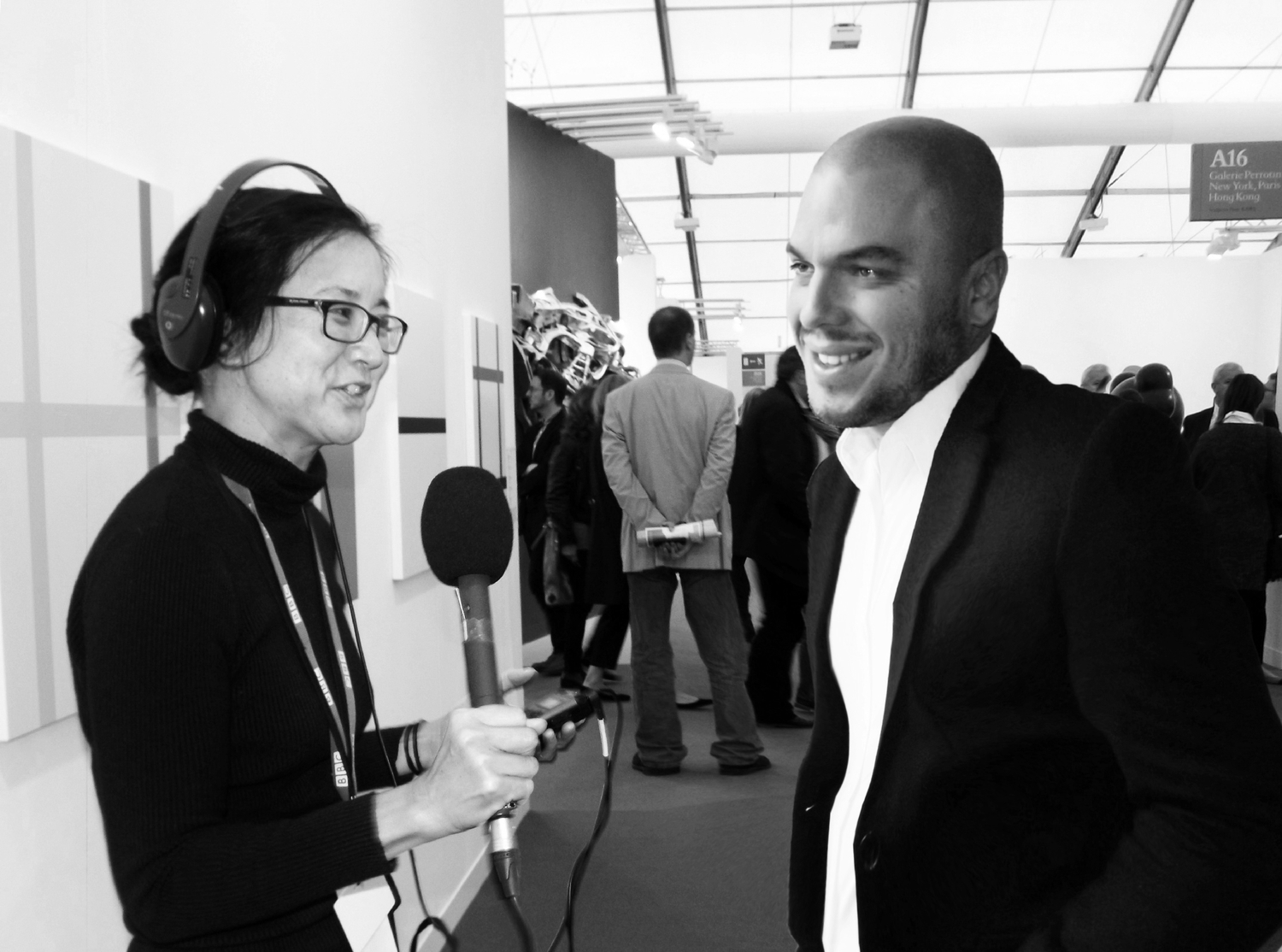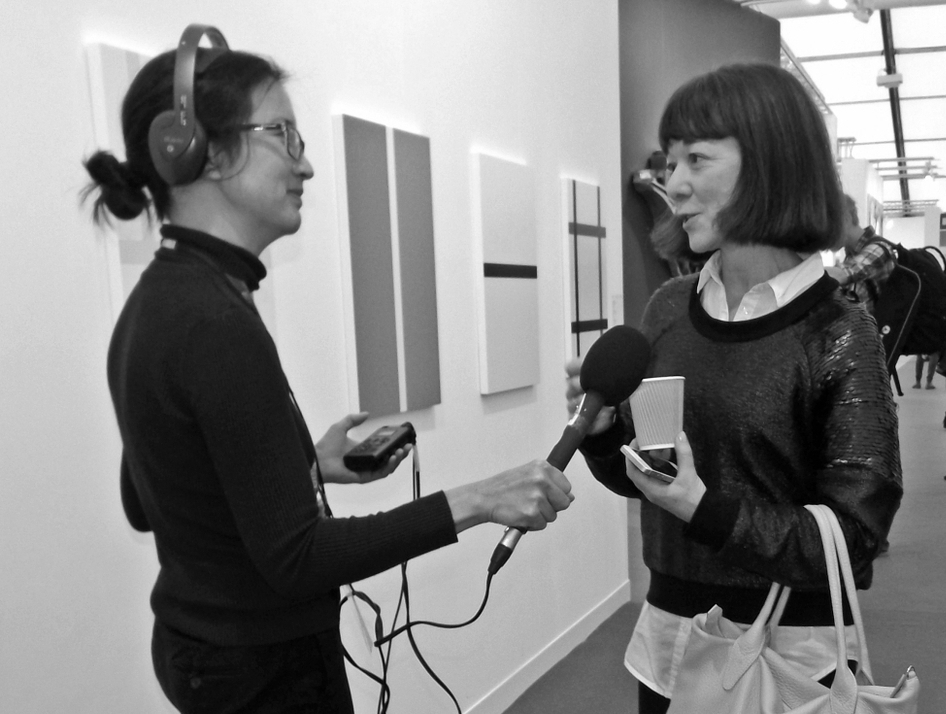A Glance at Frieze Art Fair 2014
By: Justin Merino with Josh Baker.
It's October and that means it is again time for 60,000 visitors to flood London’s Regent's Park. At this year's Frieze London Art Fair there were notable works by Darren Bader, Goshka Macuga, and Greene Netfali along with ballet performances running through the aisles. There was even a playground by Carsten Hollers, "Kinder Garten", with a giant mushroom and die-shaped play land. T-shirts for sale in the Gap Lounge were displayed behind opened irregular cut wooden doors behind a large, plywood-panelled wall.
With so much going on it was difficult to find a favourite. So, we found two. Brothers Ei and Tomoo Arakawa in Frieze's new 'Live' section and the Helly Nahmad Gallery's recreation of a 1968 art collector's flat in Paris in Frieze Masters caught our eyes.
![DSCF0073[Conflict].JPG](https://images.squarespace-cdn.com/content/v1/528f5a14e4b019edff2d6046/1413975139863-Y4U5J0CDREYS6ZXQNDL0/DSCF0073%5BConflict%5D.JPG)
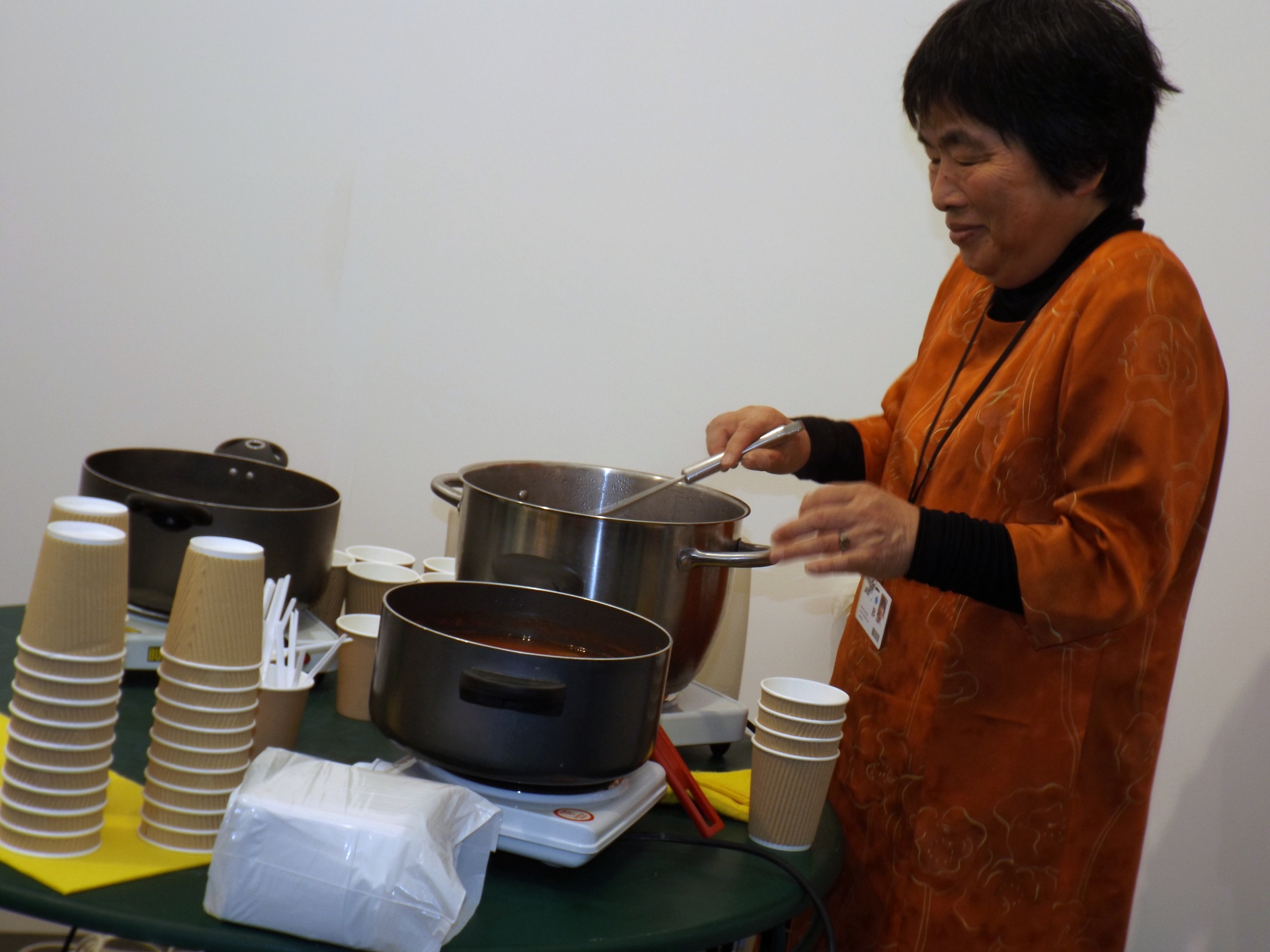
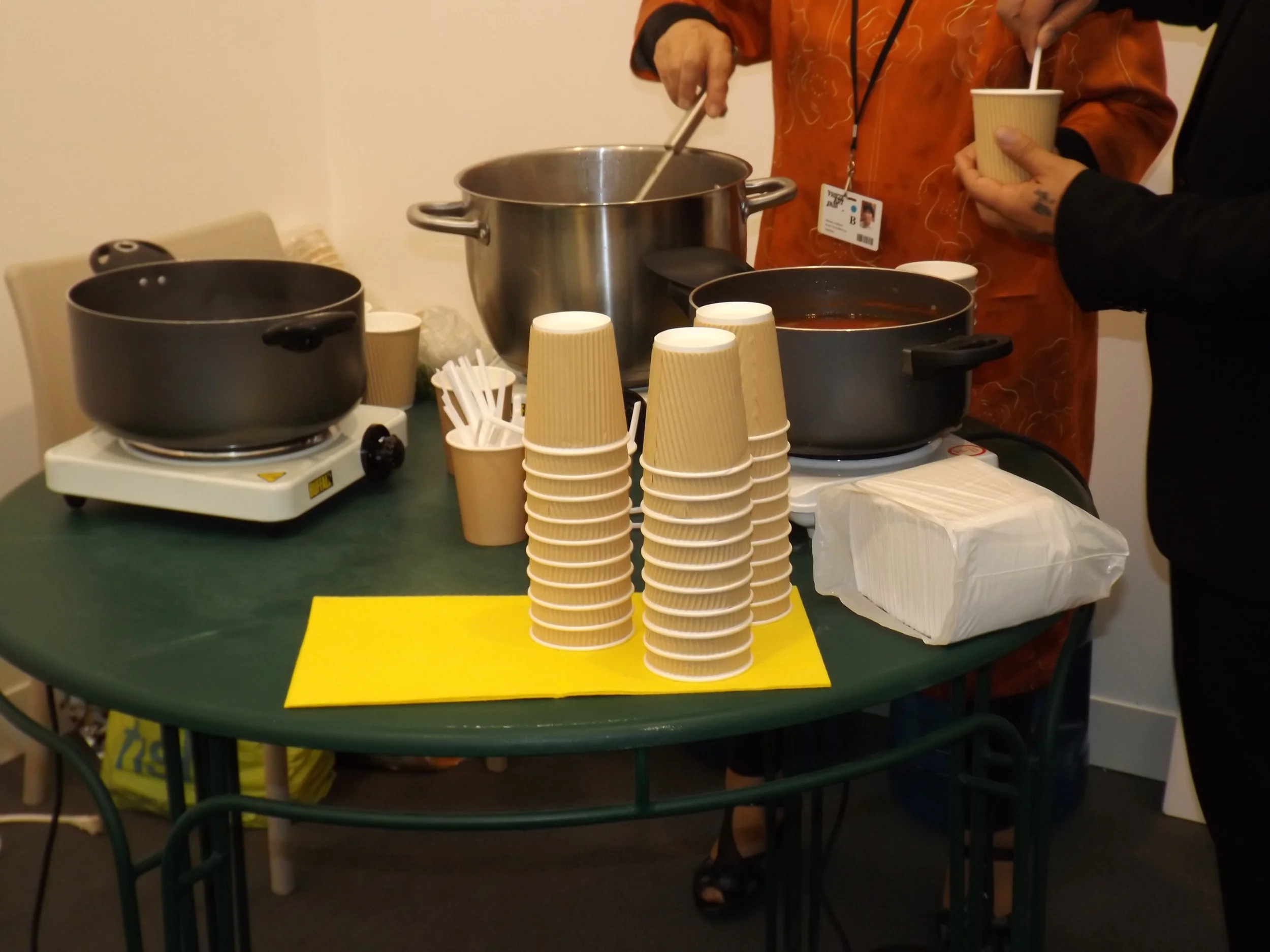
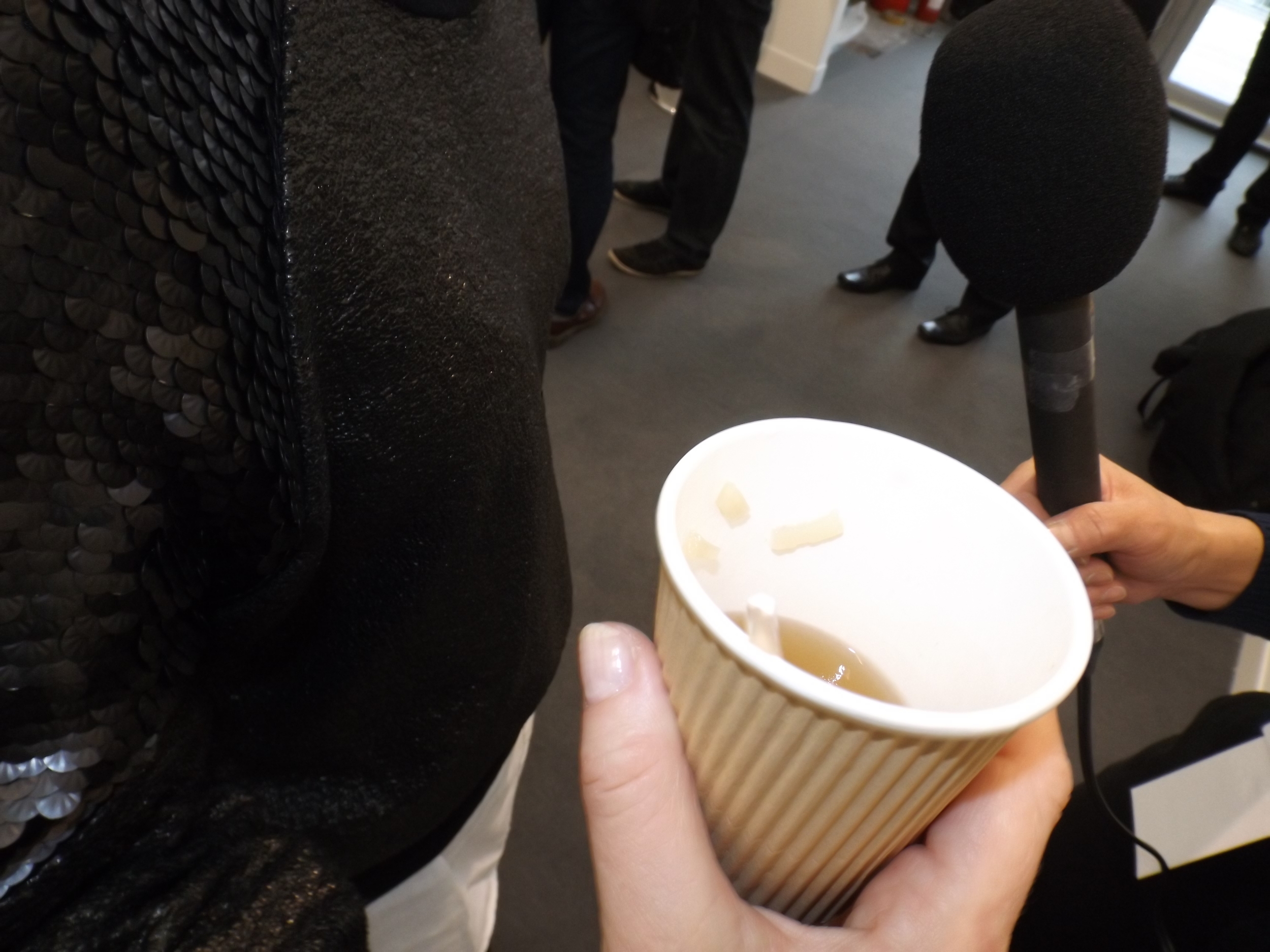
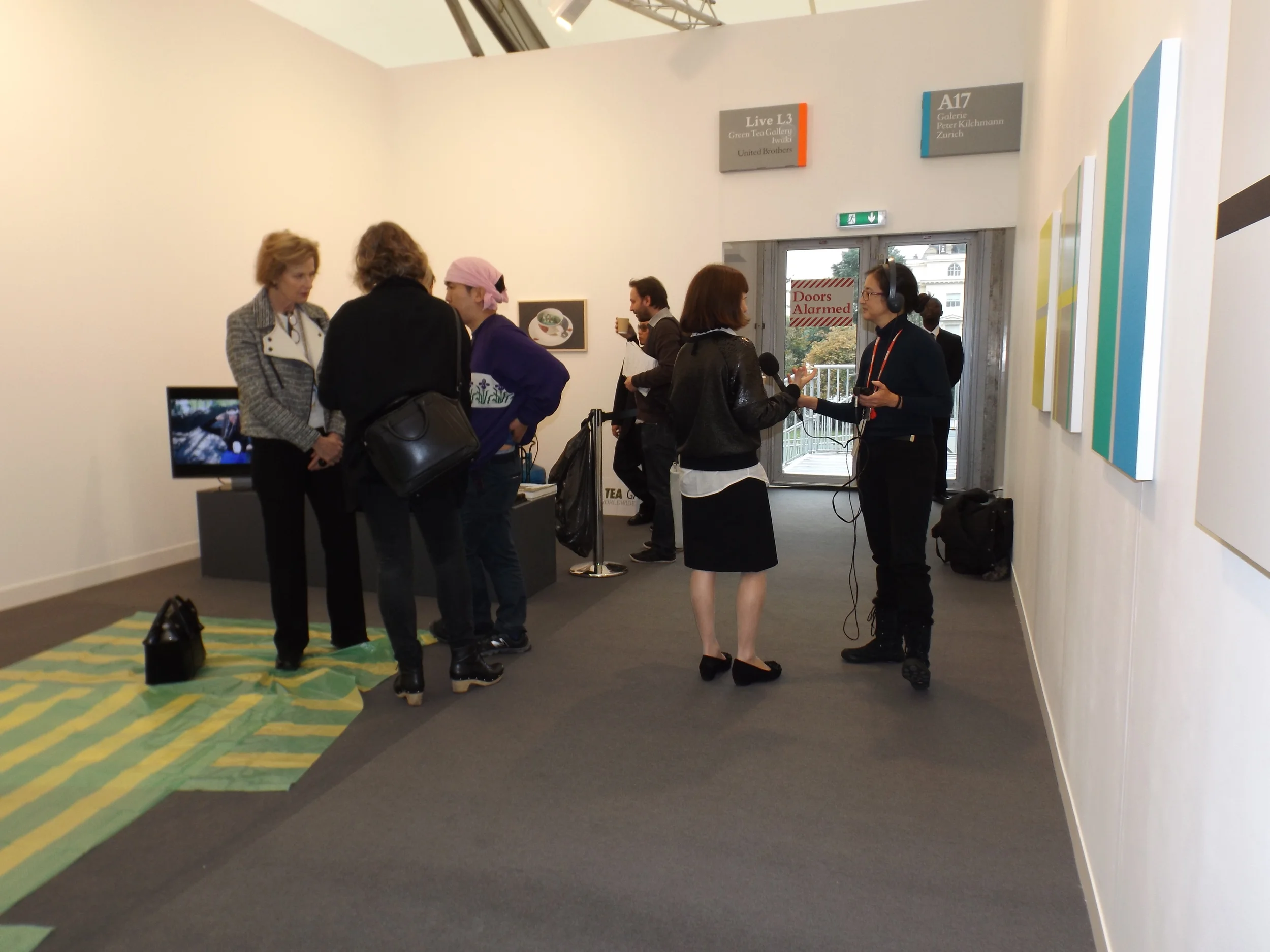


"DOES THIS SOUP TASTE AMBIVALENT?"
Earlier in the day we meet over tea with Shihoko Ogawa, Programme Director at DAIWA house. She brought to our attention the two brothers her Anglo-Japanese Foundation hosted earlier for an evening artist talk. After hearing what the 'United Brothers' were presenting at Frieze we couldn't resist but go check it out and promptly arrived at 13:00 for the scheduled performance.
The health issues surrounding the Fukushima disaster of 2011 are an on-going concern and ‘United Brothers’ confronted it head on with soup at this year's Frieze. Their mother was cooking the vegetable soup over a hot plate using the daikon radish to offer the visitors the question of whether they would partake or not. What was so important about this radish is that it is grown locally in Fukushima next to the nuclear power plant of concern.
There has been lots of scrutiny over the safety of locale food even though the Japanese Farmers' Association has deemed all of it safe--especially the radish in the exhibit's main focus. The media has sensationalized the effects of the Fukushima disaster, which has caused a negative ripple effect to life of the locals, in this case specific to agricultural. Many Japanese artists have used theme recently for their works' inspiration. In May of this year The Japan Times ran a story about a now suspended Japanese magna that featured a cooking-themed clip about people becoming sick because of Fukushima's radiation. The editor of Oishinbo called it a meaningful attempt to sound the alarm about the life on the prefecture.
They weren't looking to make visitors anxious by offering something deemed potentially dangerous. They wanted to bring an honest discussion and discourse to light about the stress of the Fukushima disaster without the sensationalism that is rampant in the media. By eating the conceptually radioactive soup people outside of Japan would be risking their well being by placing themselves in the Fukushima local's shoes.
"We wanted to present a choice that we people from Fukushima have to make every day," Ei says, "I knew that even though the vegetables aren't really contaminated, it is still a psychological choice."
The soup was actually quite a hit and BBC World Update caught up with attendees to capture their reaction. We were included in that interview.
“Sensationalism in the media is what caused this negative ripple effect in the first place, I do hope the artists message is translated and absorbed in the proper context. Otherwise it simply adds fuel to the “nuclear fire”.” Justin tells BBC.
Debora added, "I think I take a risk of eating anything in the planet every day. But, when I start to make the math, what can I eat, you know? I realize I shouldn't eat anything so I just give up and eat whatever."
As this year's Frieze London catalogue states, "...By tying the work to family and presenting it in a gallery or at an art fair as a gift, UNITED BROTHERS lend the ecological disaster an ethical dimension and an aesthetic quality that also comments on the status of art as a commodity.”
How was the soup? It was delicious but we didn't go back for a second serving.
CORRADO N.'S PARISIAN FLAT
Instead of showcasing the work of Alberto Burri, Lucio Fontana, Piccasso and Miro in a typical white walled booth Helly Nahmad found a way to bring these works to life in the gallery "The Collector". Sounds by Miles Davis set the mood of this period piece while overflowing ashtrays and dirty dishes sat in the sink. Strewn across the desks and tables of modernism influence were gallery invoices, cinema and exhibition ticket stubs, and collections notes, postcards, and receipts. One of the three Yves Klein oceanic sponge sculptures sits in the collector's living room while stacks of magazines and newspaper are on the floor.
The flat reflects a tempestuous period in Europe and can be felt in the collector's works found while traveling Europe in the 1950's and 1960's. What brings this feeling to life is the socialist posters calling for "Liberte, Egalite, Fraternite" which were torn from the streets of Paris during the riots of ‘68. Two televisions were playing clips of those riots as well as the French Winter Olympics.

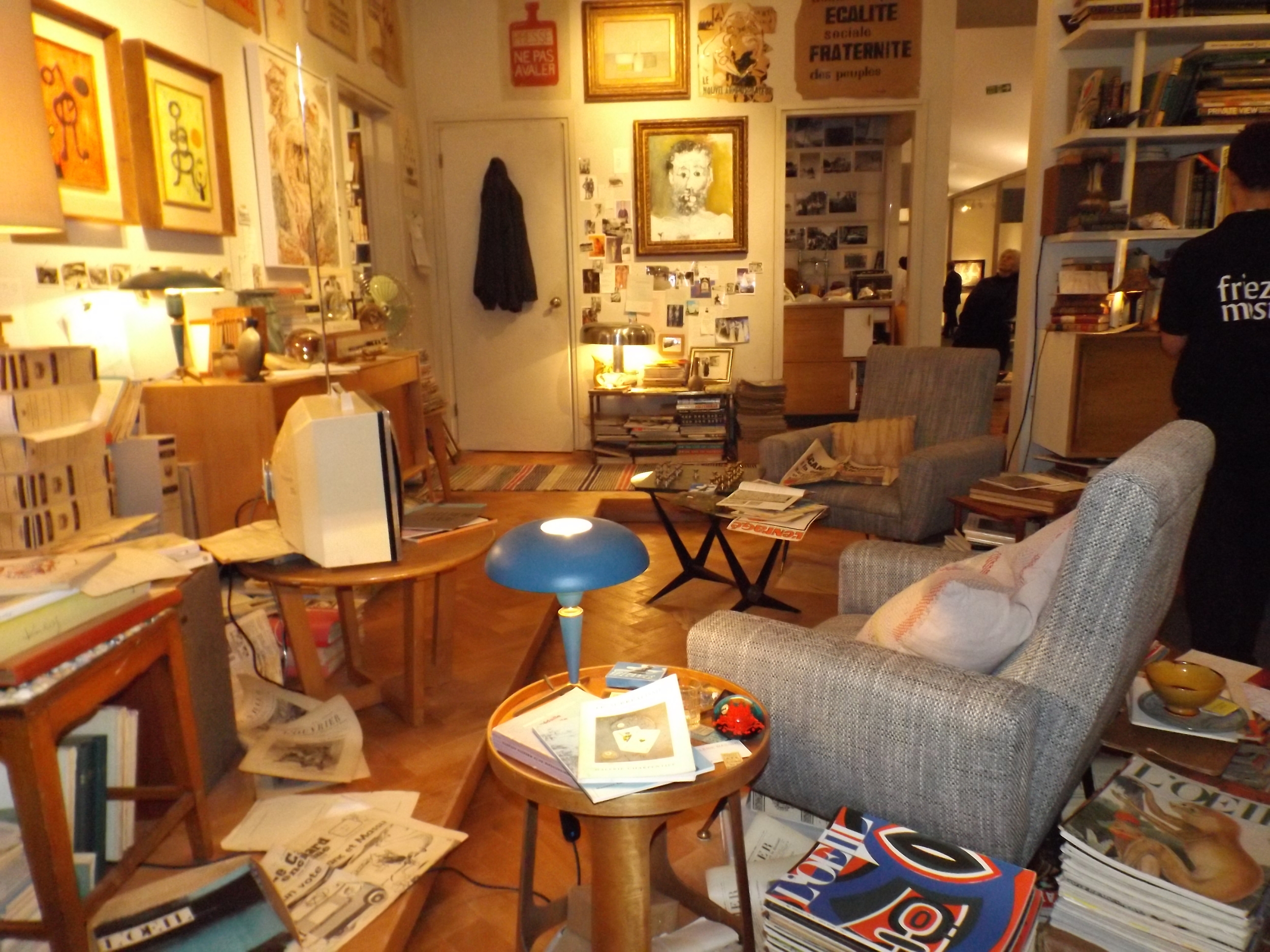
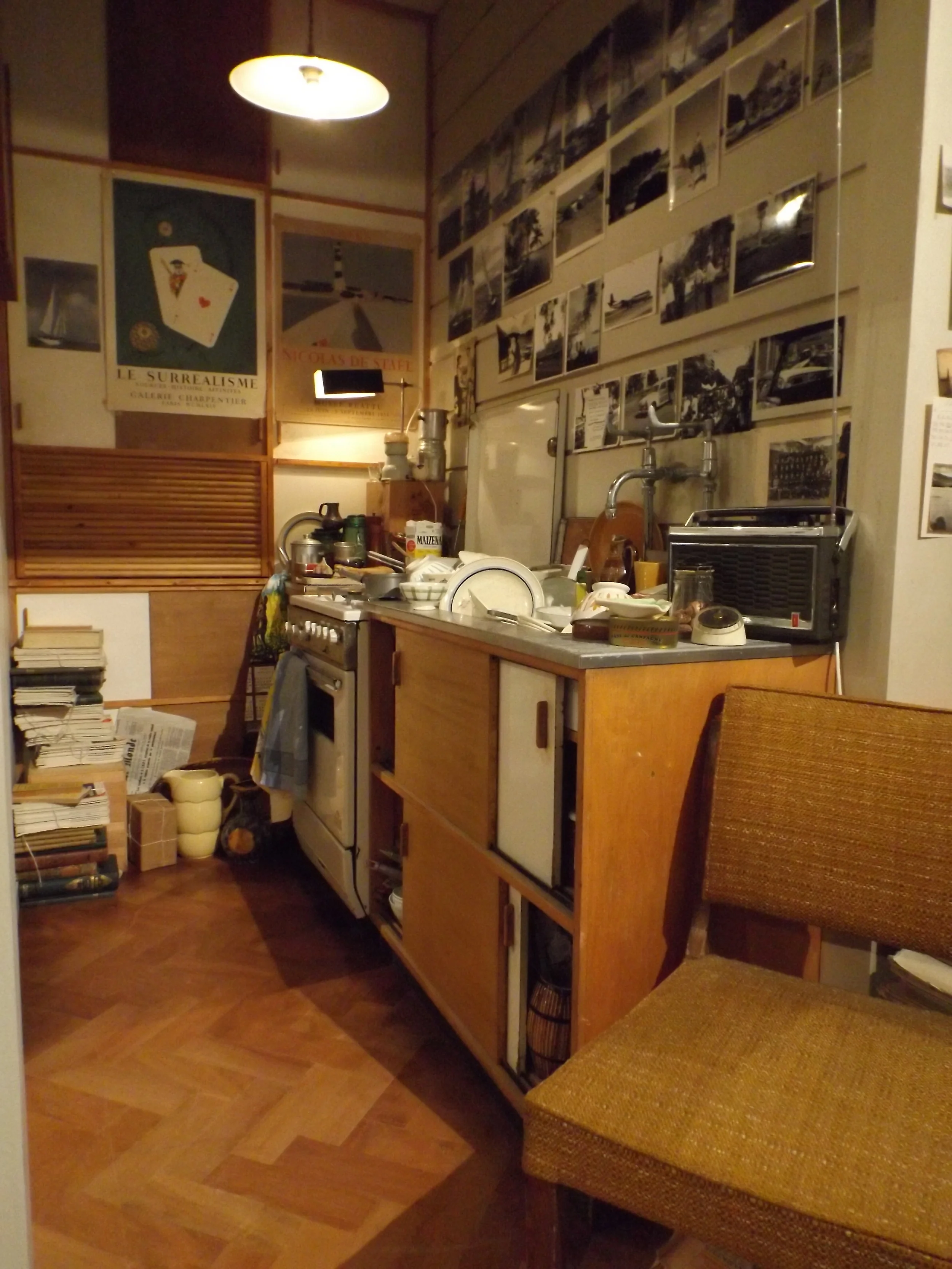
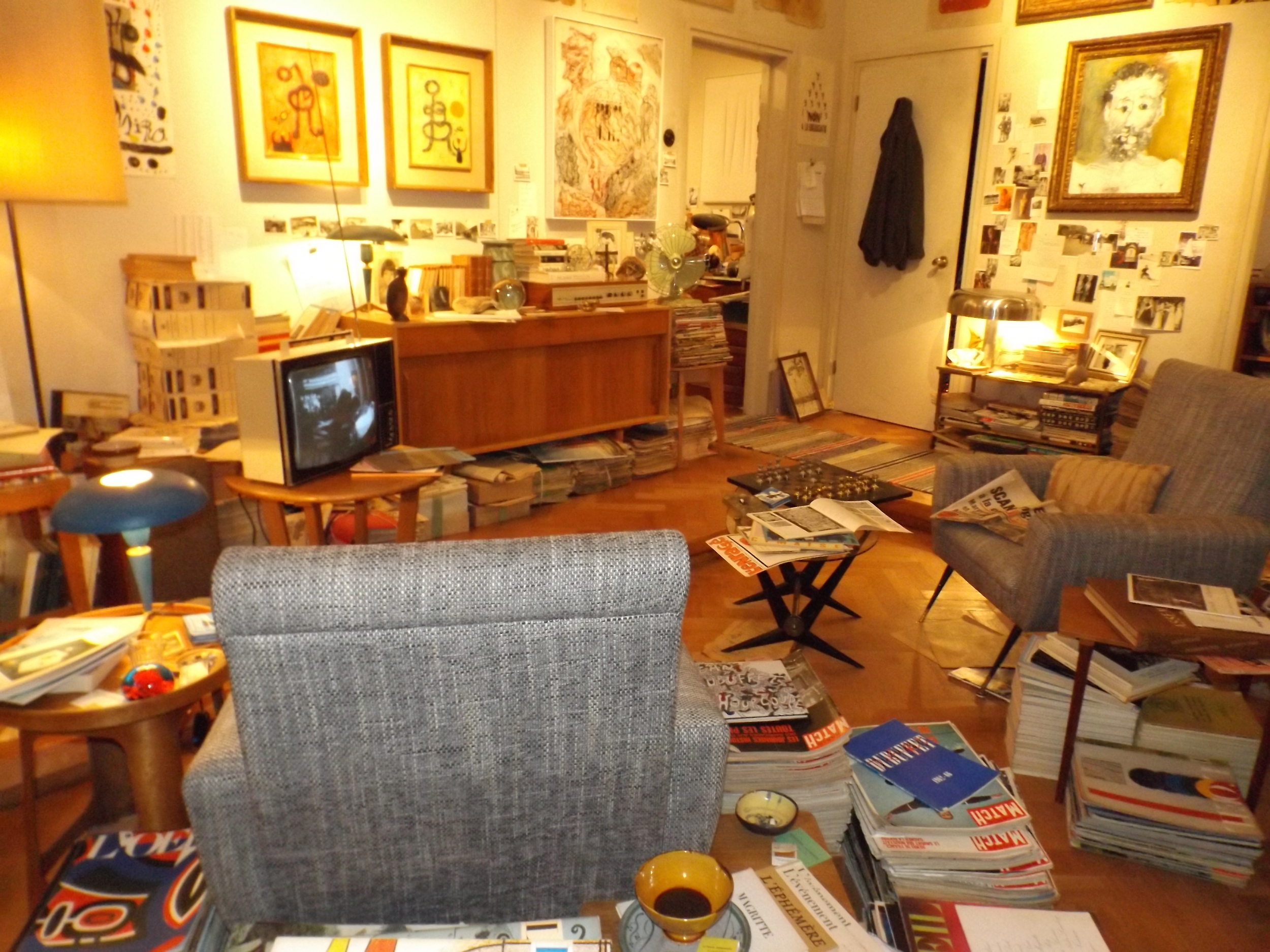


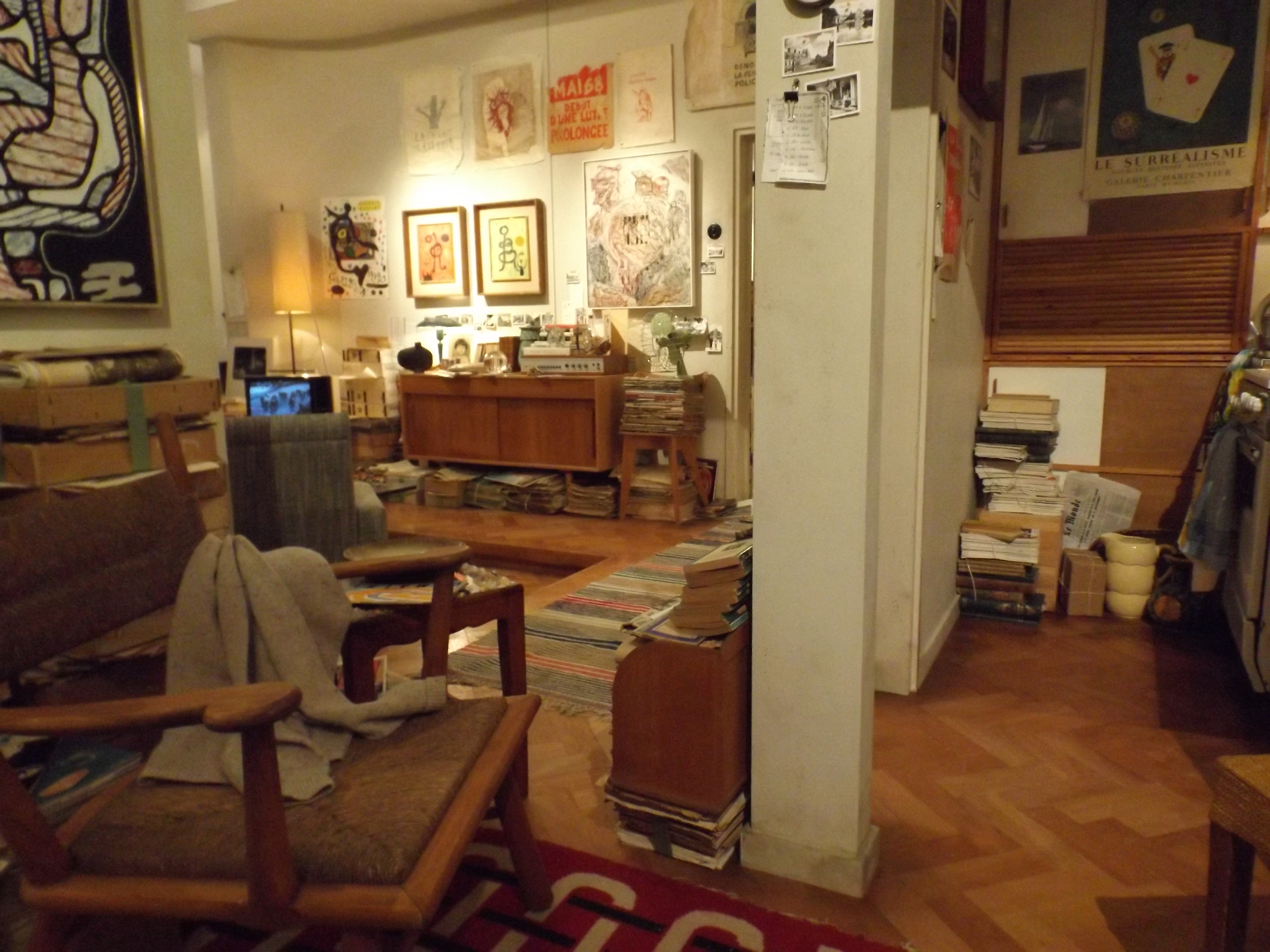
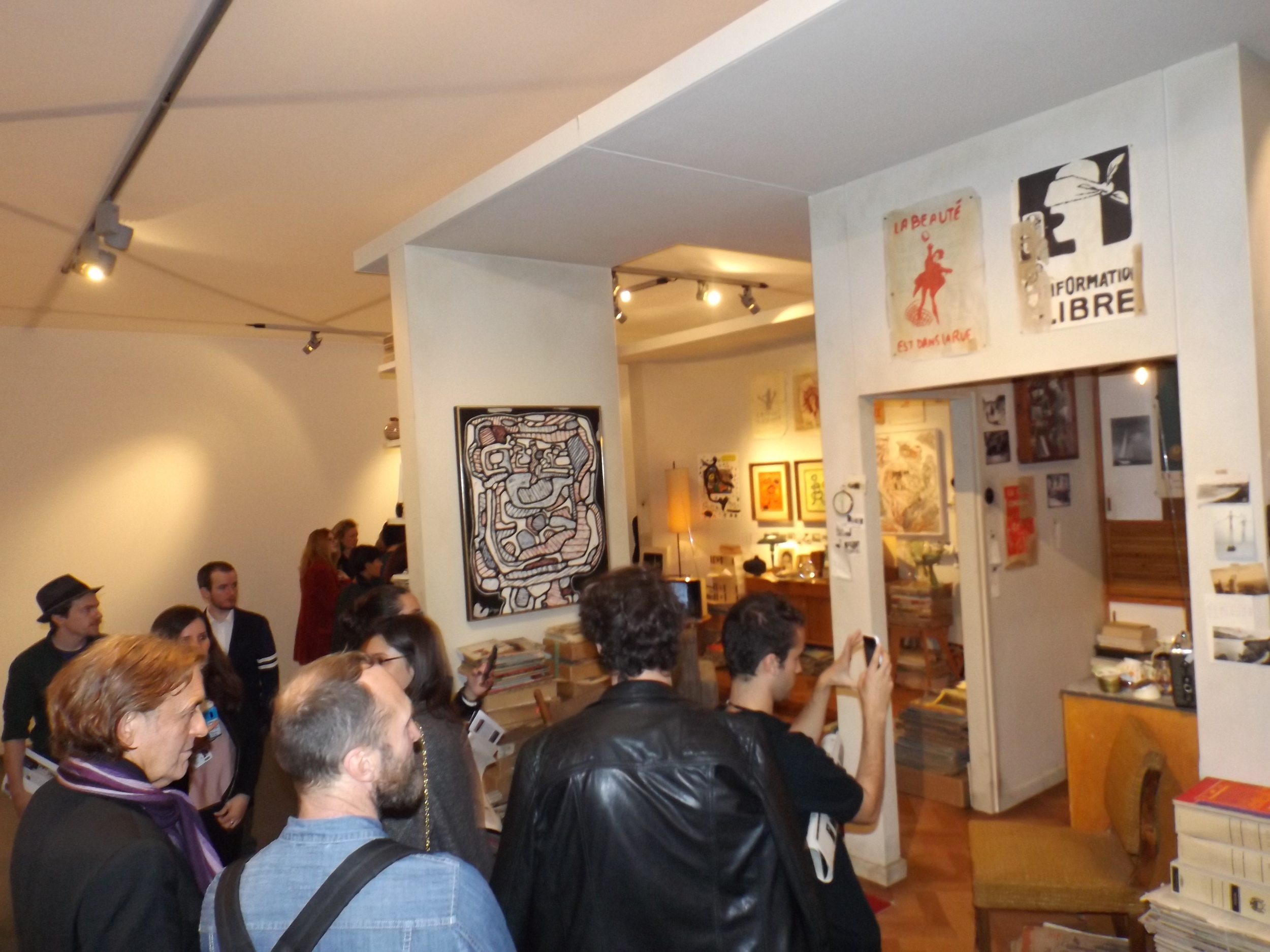
One look around the flat and you can tell he wasn't collecting art for entertainment value. It was his passion. He was intellectual and reclusive. Books of his favourite artists and poetry lined the bookshelves. For a deeper understanding of The Collector a 1960's newspaper was distributed from the stand for guests with the his background. We learned where The Collector was from and what he did for work that allowed him to purchase this art. An introduction written by Helly Nahmad reads:
‘Collected one by one over many years the works in this apartment take us on a journey through one man’s life and spirit. Like a private diary so intimate and personal, this collection is a mirror of the man. It calls into question what collecting really means in today’s world.’
This can only be described as a step back in time. There is not a single adjective to describe how breathtaking this work is even more difficult to put the intricacies of the flat into words. It is clear that Helly Nahmad's "The Collector" was the crown jewel of Frieze ’14.

